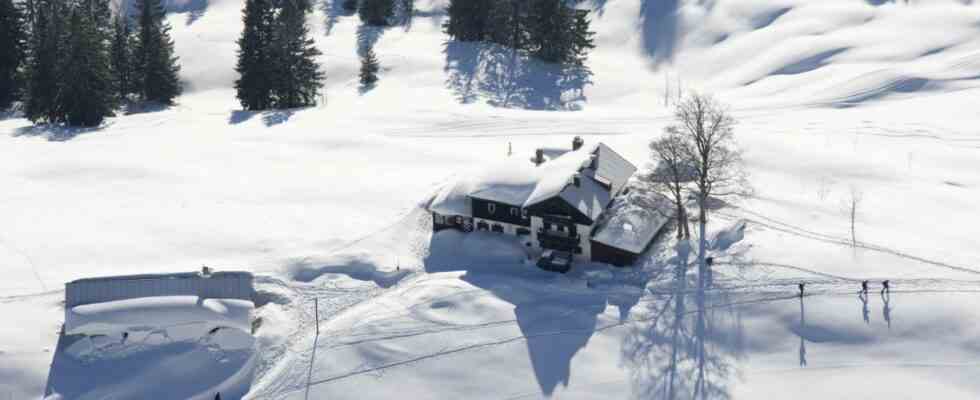The mountains all around are completely white, the sky is blue, and on the roof there is at least half a meter of snow glistening in the sun, heavy and yet apparently very light. This is roughly how the wintry hut idyll in Bavaria’s mountains should look, and sometimes it almost does. However, as winter is just beginning, it will not only be the snow that weighs heavily on the huts, but also considerable cost pressure. The President of the German Alpine Association, Roland Stierle, who was elected to office in November, has now warned of rising energy prices as a result of the Ukraine war. According to this, individual huts could remain closed in winter due to the massive increase in gas prices.
The fact that managed mountain huts stop operating over the winter is more the rule than the exception. However, Stierle is thinking of some of the Alpine Club huts where mountaineers, snowshoe hikers or ski tourers can spend the night in winter. There are about 20 such huts in the Bavarian Alps, estimates DAV press spokesman Thomas Bucher. And the current energy prices are affecting the hut owners at least as much as they are the restaurateurs in the valley.
The costs have already increased enormously, says Michaela Durach, who runs the Lenggrieser Hütte below the Seekarkreuz together with her husband. They won’t reopen up there until after Christmas, like many huts that operate in winter. But the Durachs had to fill the two liquid gas tanks for the small combined heat and power plant in the autumn, because later it is by no means certain that their hut, located at an altitude of 1338 meters, can still be easily reached by vehicle.
More than twice as much as before had to be spent on liquid gas, says Michaela Durach, which also corresponds to the information provided by DAV President Stierle. In addition, the gas bottles for cooking and the fuel for the emergency power generator would have to be paid for, and the staff should also earn a little more now that everything is getting more expensive. A relatively small hut like the Lenggrieser still gets by with comparatively little heating material, and it doesn’t need that much staff either, because Florian Durach cooks himself and the guests have to get their own food and drinks at the counter.
Many huts are poorly insulated
Basically, however, mountain huts often have to be heated much more than in the valley – not least because of the lower temperatures on the mountain, but also because many huts are already a hundred years old or even older and can hardly be insulated according to the latest standards. This is also pointed out by the hut consultant of the large DAV section in Munich, Thomas Gesell.
In order to make life at least a little easier for their hut keepers, for example at the Albert-Link-Hütte on Spitzingsee or in the nearby Taubensteinhaus, the section allowed them to charge a little more for overnight stays than before. This “energy surcharge” is therefore two euros per night for each adult and one euro for children or young people.
According to Gesell, the numerous smaller self-catering huts that the section owns together with the Oberland section in the Bavarian Alps are also affected by the increased heating costs, but to a much lesser extent than the large managed houses. If too much money is missing, the prices could be raised slightly if necessary.
As far as electricity is concerned, many huts are now more or less self-sufficient thanks to photovoltaic panels or their own small hydroelectric power plants, including large accommodations such as the Watzmannhaus or the Höllentalangerhütte in the Zugspitze massif. In the summer, some mountain huts faced completely different problems, even without large energy costs. Here and there the water was scarce, according to Stierle, some huts had to be closed temporarily. In Bavaria, according to DAV spokesman Bucher, the highland hut in the Karwendel above Mittenwald was about to be closed.

